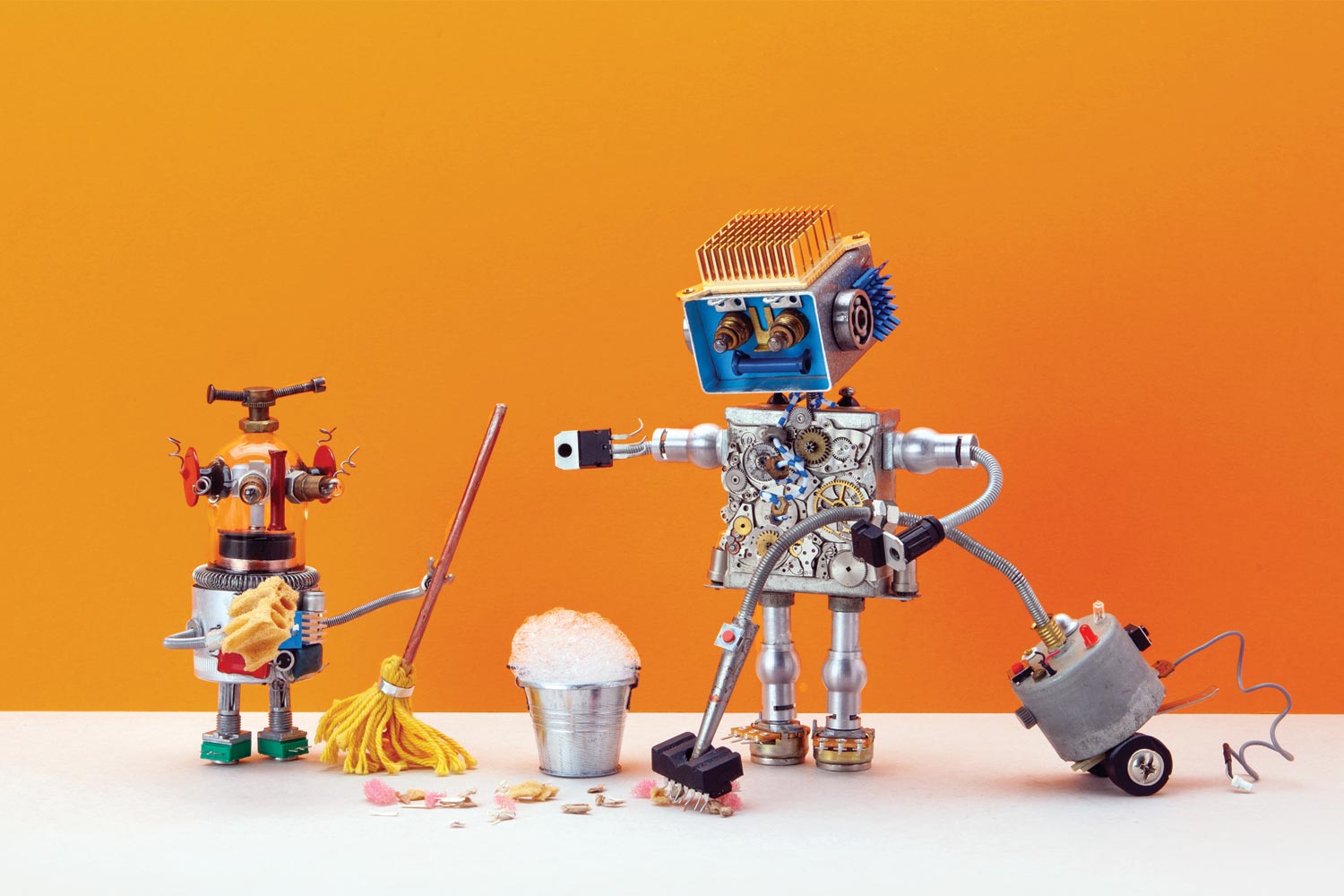Imagine that during the next pandemic, workers at schools, airports, hospitals, and other public spaces can program a robot to disinfect an entire room using UV light without exposing anyone to harmful pathogens.
In response to how COVID-19 has completely shuttered buildings of mass gathering for months on end, Civil and Environmental Engineering Professor Qiang He and Assistant Professor Shuai Li, along with Mechanical, Aerospace, and Biomedical Engineering Professor Jindong Tan, have published new research in Building and Environment that highlights the potential benefits of integrating robotic decontamination and infrastructure design.
The aim of their research, entitled “Segmenting Areas of Potential Contamination for Adaptive Robotic Disinfection in Built Environments,” is to help prevent the spread of pathogens like COVID-19, which can persist on nonporous surfaces for up to nine days.
Cleaning buildings with highly communicable pathogens poses a burden for sanitation workers. Decontamination requires a heavy workload with frequent cleanings and health risks to workers who are exposed not only to dangerous pathogens, but also to an overabundance of harsh disinfectants.
Collaborative research between civil, environmental, mechanical, and biotechnical engineers at UT offers a new paradigm for how cleaning is performed to prevent the spread of infectious diseases in buildings of mass gatherings, a new approach at cultivating a healthy environment, and combating outbreaks and pandemics.
Their objective was to create and test a novel framework and new algorithms for a robotic manipulator to conduct automatic disinfection in indoor environments.
“For what we’re doing, the robotics has to be tightly integrated to the building design, operation, and the presence of pathogens as well as people,” said He.
“The robot spatial awareness of areas that might be contaminated in complex indoor environment is the key for robotic disinfection,” said Li. “The adaptive trajectories generated for robotic manipulators to scan objects in the context of the room will ensure safe, complete, and precise disinfection.”
To program the robots, the research team proposes using deep-learning techniques to segment areas of potential contamination and then map the segmented areas in a 3D space to guide the robotic disinfection process.
They also have proposed a new method of control where a robot would move to areas needing disinfection and generate trajectories based on the geometries of areas of potential contamination, taking into account surrounding contexts. The adaptive motion will ensure disinfection quality and safety.
“With this technology that exists right now, we have the capability of creating robotic decontamination units in the very near future,” said Tan. “Further research is needed on the use of multiple robots for coordinated disinfection, as well as performing within a social context, but we are well on our way to breaking new ground with this collaborative research.”
Using their proposed methods, the robot platform can reduce the infection risk of cleaning workers by keeping them away from contaminated areas. Information can guide the robot to focus on hot spots and thoroughly disinfect potentially contaminated areas, which helps reduce seasonal epidemics as well as pandemics of new virulent pathogens.
While technology in robotics is advanced enough to be deployed according to these goals, the team says that these robots will not replace people’s jobs, but would assist them without replacing the need for human labor.
